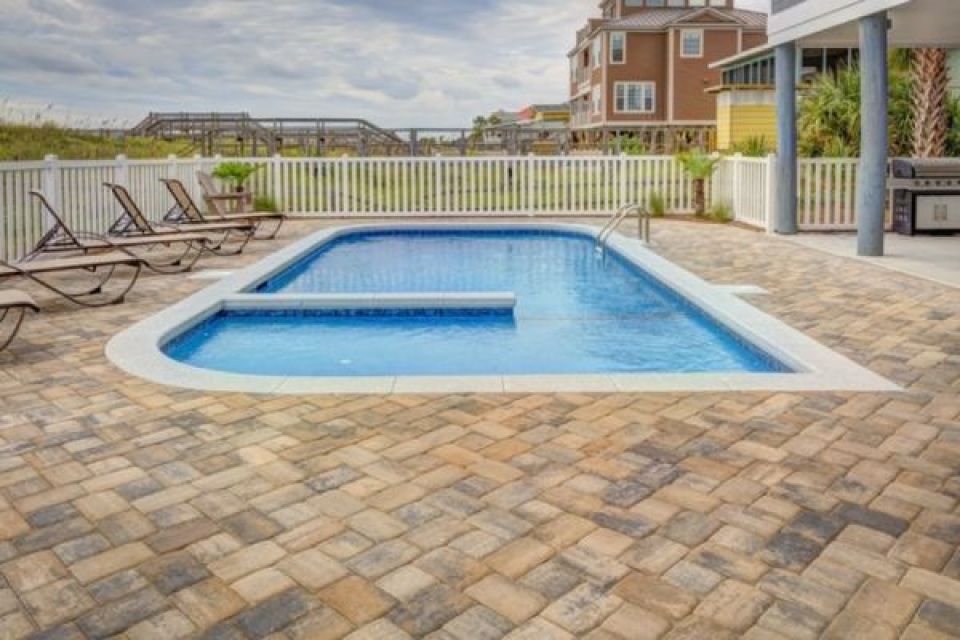Poop Parasites on the Rise in Pools and Tips for Staying Safe
02/25/2021 | Written by Nikos Kaskaras in Swimming Pool Tips
Every rose has its thorn, says a popular song and the same applies to the swimming pools. Indeed, if we think of swimming pools as a rose (because of the vast possibilities for practice and entertainment they provide) then poop parasites are, beyond any doubt, the thorn. In fact, parasites are the only point of concern when talking about swimming pools. Nevertheless, all problems have their solution and the same goes with these annoying, irritating and sometimes dangerous organisms. But, first of all, we need to identify the nature of the problem and gain a broad understanding.
How parasites emerge in swimming pools
Well, this is a very interesting question. For those of you who don't know the answer to that, could you make a guess? Take a few seconds before reading further...
The answer is that humans are the source of parasites' emergence in swimming pools. Parasites “use” people as their transmitters and then it's a matter of coincidence to pass to another person. Did I use the word coincidence? Well, actually the word disrespect suits better. Why? Because the way many of these parasites are spread from person to person in swimming pool water is via a faecal transmission. However, parasites are not only transmitted through the act of peeing in a swimming pool. According to the United States Centers for Disease Control and Prevention, there are actually small amounts of poo on most people’s bottoms - about 0.14 grams of faeces on average. When people enter a swimming pool, poo gets washed from their skin in the water. Then, the contaminated water is swallowed by other swimmers and the germs are transferred to their bodies. Maybe some of you think that you are careful when swimming and that you don't swallow water. However, a study conducted in 2006 found that during a 45-minute swim, adults swallow on average 37 millilitres of water. That's about two tablespoons, while children swallow twice that amount, for the same period of time. Parasites can cause a range of symptoms: diarrhoea, nausea, vomiting and stomach cramps.
A problem on the rise
Pool parasites shall not be taken lightly. It is not a rare phenomenon that would affect only the “unlucky few”. On the contrary, it's a problem on the rise, mainly because swimming in swimming pools is becoming more and more popular. A report published by CDS (Centers for Disease Control and Prevention) has revealed that the US has experienced a 13 % rise in parasite outbreaks per year between 2009 and 2017. At the same period of time, one death has been reported, while 287 people were hospitalised. The same study found that 58% of tested pools were positive for bacteria typically present in faecal matter. Such kind of data makes it clear that the issue should be taken seriously.
Chlorine is not enough
Swimming pools are more dangerous for transmitting parasites - mainly because of their smaller size when compared to the ocean. We shall highlight that chlorine as much as a preventive substance it can be, is not a panacea. It does not kill germs instantly. Depending on the parasites, it takes a different time for the same amount of chlorine to work. For example, chlorine will kill bacteria such as E. coli in under a minute, but it will need 16 minutes to kill the hepatitis A virus, 45 minutes to kill Giardia and 10 days (!) to kill Cryptosporidium. Another associated problem is the inadequately chlorinated or non-chlorinated water of the swimming pools. The World Health Organisation has published a relevant study providing guidelines for safe recreational water environments. Furthermore, we shall point out that parasites are also emerging in the ocean environment, regardless of their vast size, when compared to swimming pools.
Tips for staying safe
So, there comes the crucial question: What shall we do to avoid the harmful effects of parasites when being in the water? First of all, we shall choose wisely the places where we swim. Although it's practically impossible to absolutely avoid them, we could reduce the possibilities of a bad incident by swimming in environments we trust. When speaking about swimming pools, knowing the person who owns them and building trust relationships is important. Then, we could use references and recommendations from other people before choosing a swimming pool. If we want to swim in the ocean, we need to be informed about its suitability for swimming. Mass media state every year the beaches that are inappropriate for swimming, so always keep yourselves informed. Another option would be to choose beaches that are not so crowded, thus diminishing even further the possibilities of getting infected with parasites.
Then, if you have an open or exposed wound, it would be safer to avoid swimming until it is healed. Usually, it takes 7 to 10 days for a wound to heal completely, so let time do its job.
Another tip is to always use soap after your swimming sessions because it is a strong “weapon” for preventing infections. Also, you always need to take a good look at your skin after swimming and check if you have any scratches or cuts. In case you detect one, rinse it well and then use an antibiotic ointment to cover it. Of course, the same applies to children and you should always check them carefully after they are out of the water.
Probably the most important of all preventive factors is our personal hygiene. If we all washed extremely carefully before swimming, there would be fewer chances of carrying and transmitting parasites into the water.
Finally, using hand sanitisers to clean our hands on a beach or a swimming pool before eating a snack or a meal, is another practical solution for staying safe.